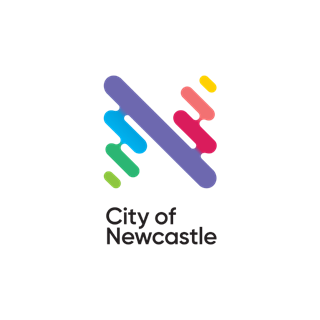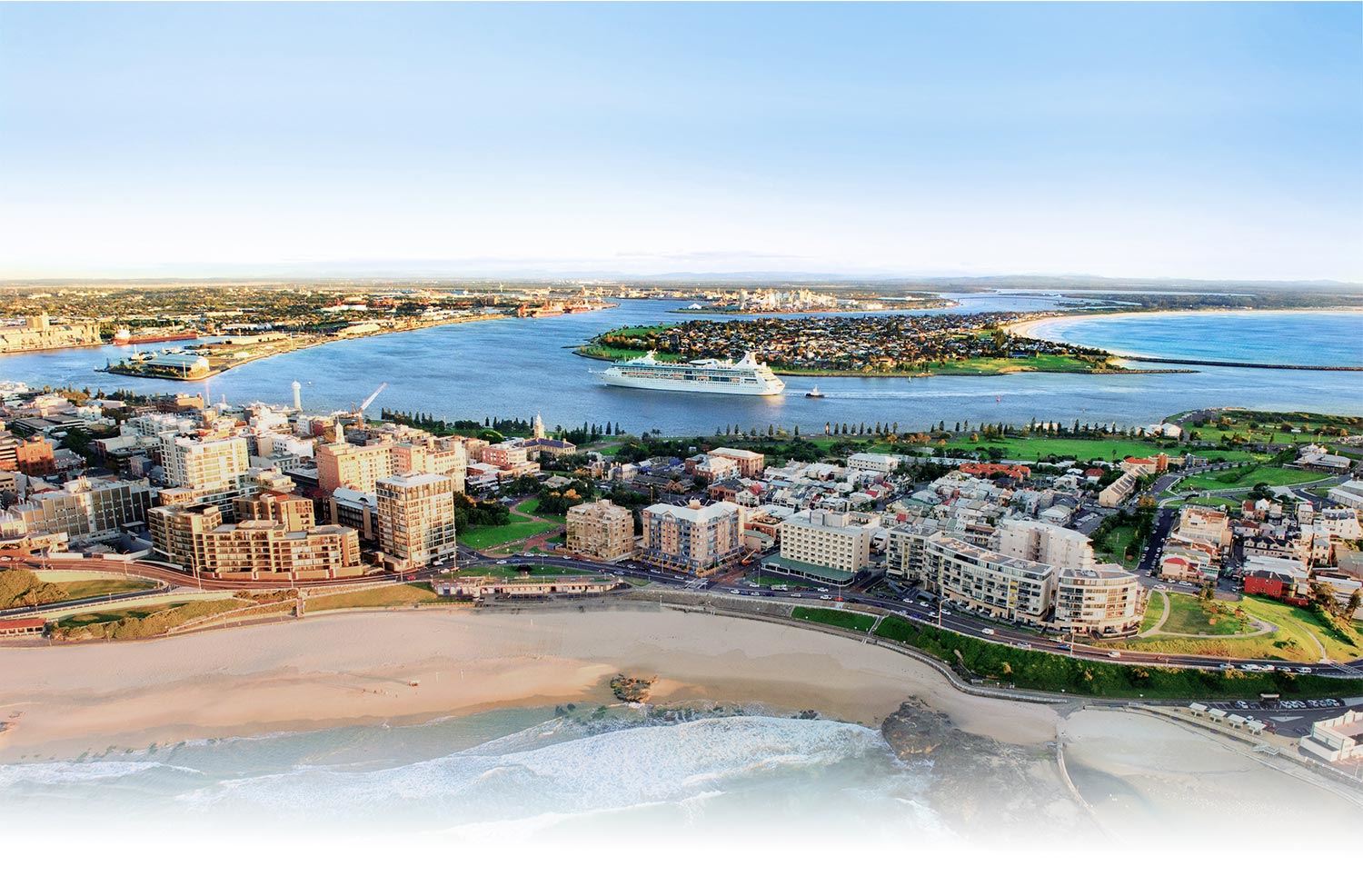
City wheels out first driverless vehicle
09 July 2019
The future of automated transport has arrived in Newcastle with the City’s brand-new driverless shuttle bus unveiled today.
Wrapped in City of Newcastle’s branding, the 11-seater vehicle was revealed for the first time by Lord Mayor Nuatali Nelmes at Keolis Downer’s Hamilton depot, where rigorous safety testing will soon commence before passengers can enjoy the unique service along the harbour foreshore.
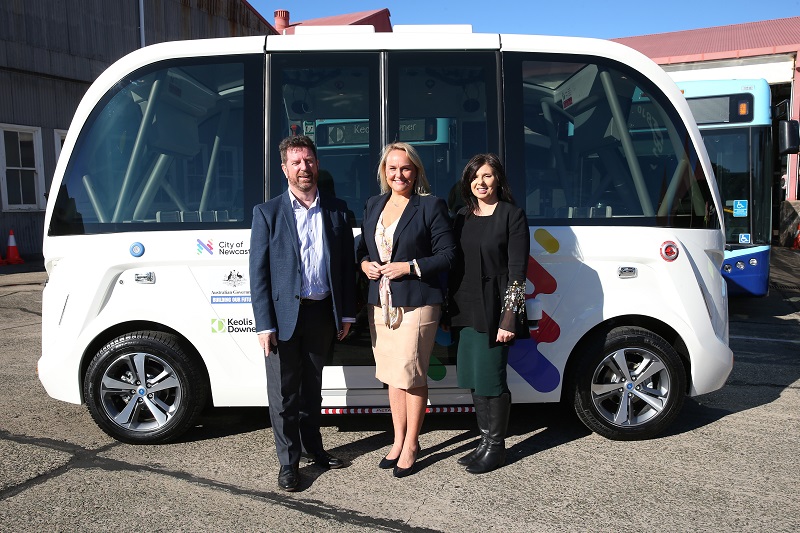 KD Hunter General Manager Mark Dunlop with the Lord Mayor and KD's Sue Wiblin.
KD Hunter General Manager Mark Dunlop with the Lord Mayor and KD's Sue Wiblin.
The Lord Mayor said it was fascinating to inspect the driverless vehicle ahead of its initial 12-month trial.
“This is a major milestone for the city’s smart city journey, and I look forward to working with Transport for NSW and partners Keolis Downer on this unique opportunity to make the future of automated transport in Newcastle a reality as we transform the city into a living lab,” Councillor Nelmes said.
“The City’s vision for a smart, integrated transport network begins in earnest with the arrival of this new driverless vehicle, which we propose connecting with Newcastle’s integrated public transport network.”
“We are planning for passengers to be able to take in views of the City’s harbour along the proposed 2km loop service, from Watt Street along Wharf Road to Nobbys and back, making it very appealing to tourists. A larger circuit will include some of Newcastle’s other beachside destinations after a couple of months.”
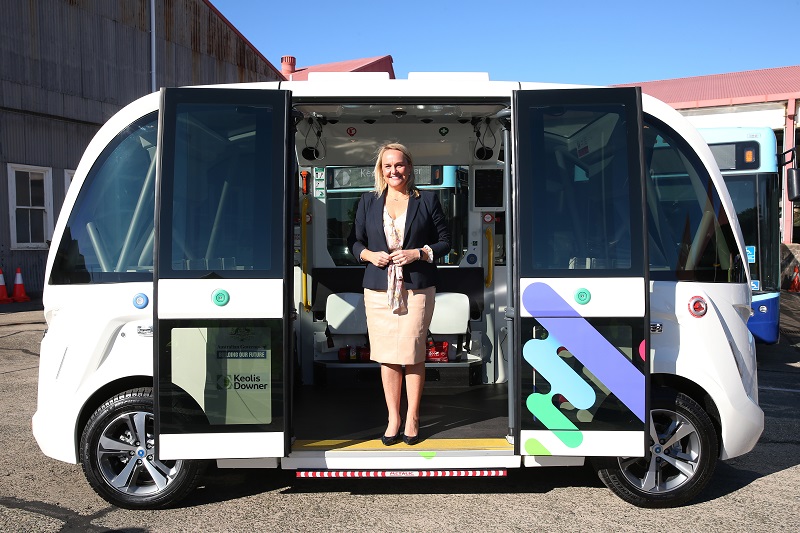
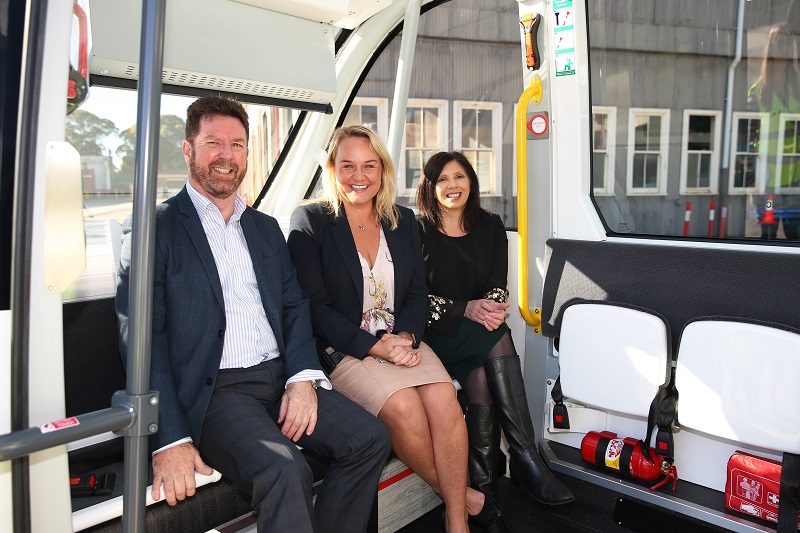 KD Hunter General Manager Mark Dunlop with the Lord Mayor and KD's Sue Wiblin
KD Hunter General Manager Mark Dunlop with the Lord Mayor and KD's Sue Wiblin

Keolis Downer New Mobilities Manager Sue Wiblin confirmed the trial was being developed in accordance with national and state legislation and regulations to ensure it met all safety standards.
“Over the next month, we will complete a rigorous safety testing program, on road and off road, to prepare the vehicle for customer services,” Ms Wiblin said.
“In-built computers and sensing systems capable of detecting obstacles, anticipating movement and evaluating risk of collision, are what sets this vehicle apart from the risks associated with human-controlled cars.
“These systems are capable of detecting vehicle movement and are also able determine the travel route, make decisions to slow down, brake and alternate the vehicle’s path if required.”
While the vehicle is fully automated, a chaperone, who will always be onboard during operations, will be able to stop the vehicle via an override system if required.
Testing will be carried out before the service is launched.
When launched, the trial will help gauge demand for driverless vehicle operations and assess their suitability in mixed traffic and transport scenarios in Newcastle.


